To protect the artwork from unauthorized reproduction, only a select portion is displayed on this site.
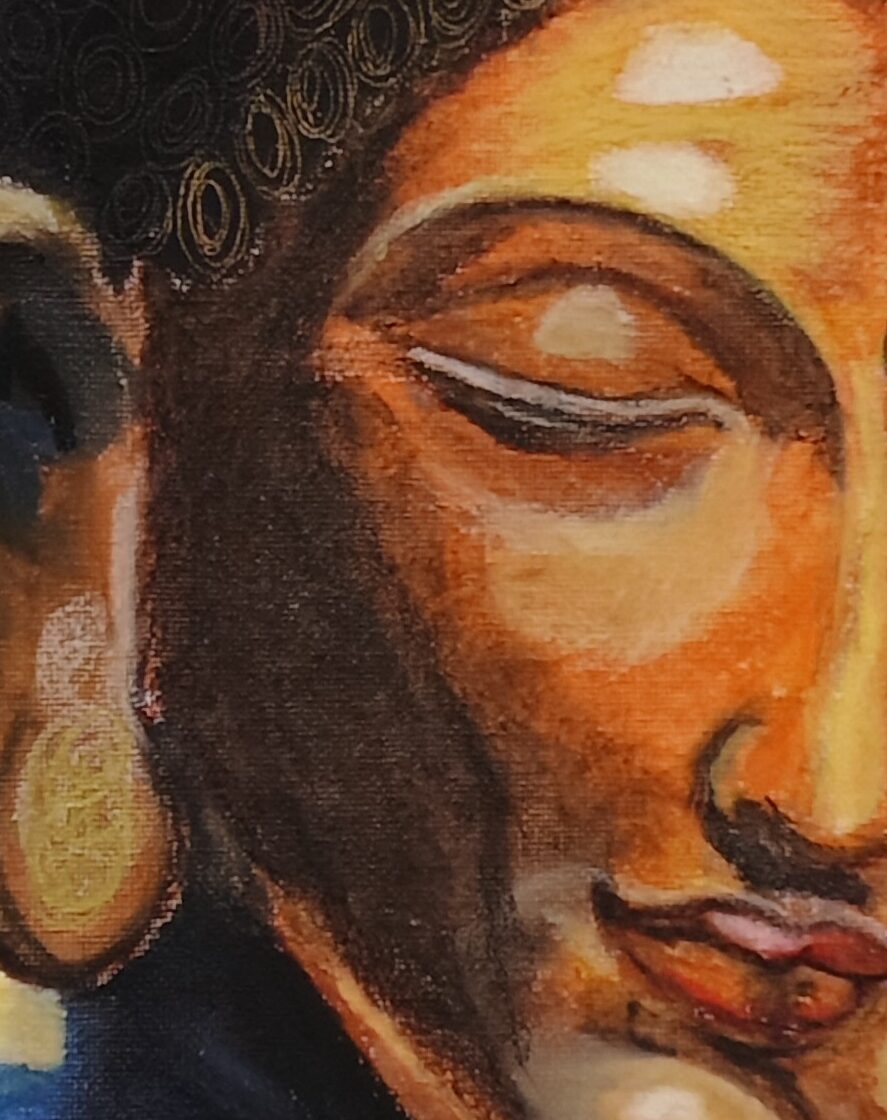
Buddha’s eyes, dreamlike, are drawn in deep indigo, as if dipped in twilight. They gaze inward, inviting the viewer to journey into silence. His lips, gently curved in a knowing smile, are shaded with rosewood and terracotta, echoing the warmth of compassion and the hush of inner peace.
The contours of his face are sculpted with soft transitions—ochres melting into siennas, browns fading into golden light—creating a sense of divine softness. The texture of the crayon lends a tactile intimacy, as if the wax itself remembers the touch of contemplation. The background is a dreamscape of spiritual symbolism. Pale yellow and orange with swirl like evening dusk evoking the serenity of the Bodhi tree under which Buddha attained enlightenment. A soft golden halo at back of his head, not as ornament, but as a quiet proclamation of awakening.
Despite the simplicity of the medium, the painting breathes. It is not merely an image, but a moment suspended—a visual mantra, a waxen whisper of serenity.
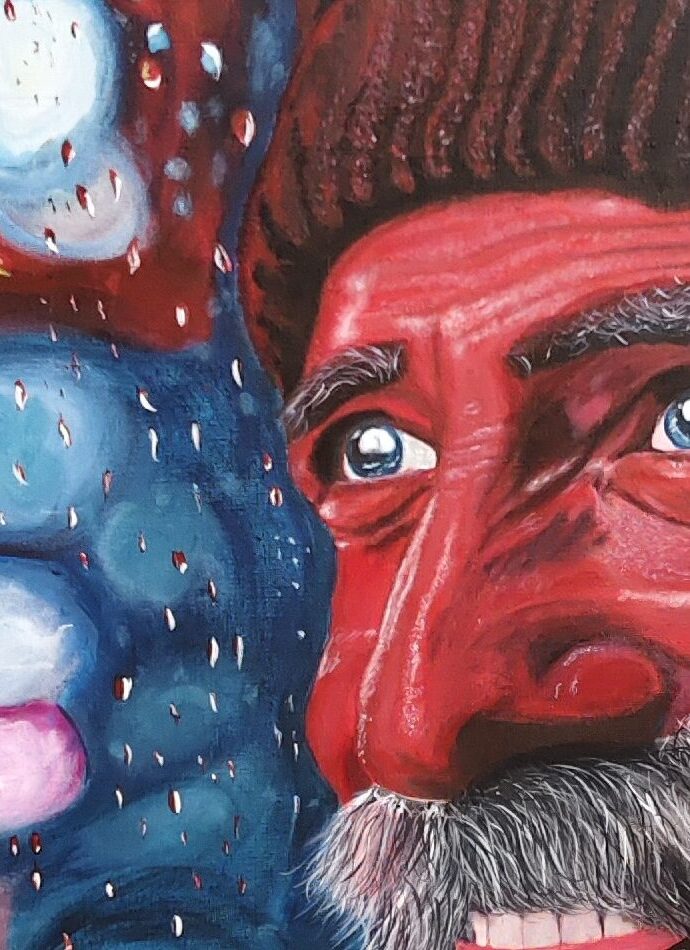
The darkness surrounding him symbolize solitude or the passage of time, while his shiny eyes reflect vitality, hope, or a moment of joy despite the somber setting.
The smile suggests contentment or nostalgia, possibly recalling cherished memories or quietly appreciating what lies beyond. The composition used soft light illuminating his face partially, emphasizing the expressive eyes and the gentle smile, while the window he gazes through hint at an unseen world of possibilities or a connection beyond his confined space.
The painting balances themes of age and vitality, darkness and light, solitude and connection, capturing a poignant, intimate moment of human experience.
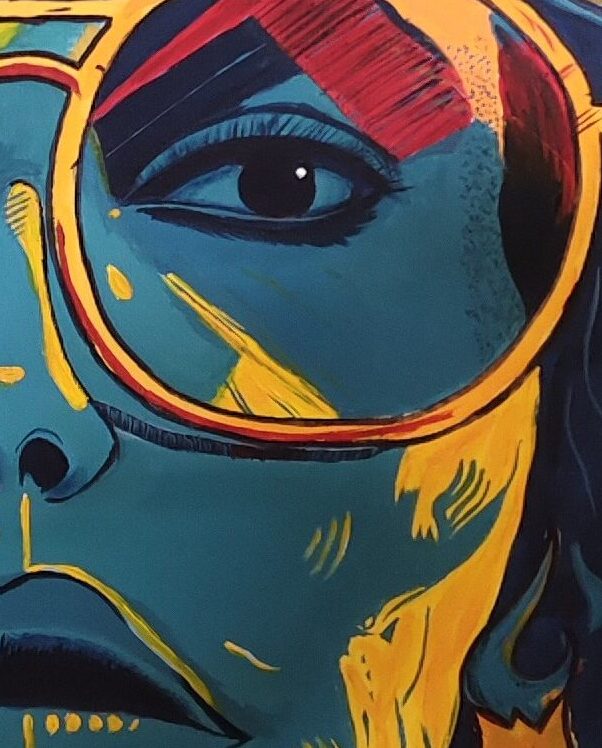
Subject: A confident young woman standing or moving in a bustling cityscape, embodying modern urban culture.
Stype: Contemporary, possibly influenced by street art, pop or abstract expressionism characterized by sharp lines, strong brush strokes or mixed media.
Color Palette: Electric blues, yellows interlaced with contrasting shadows to add depth and energy.
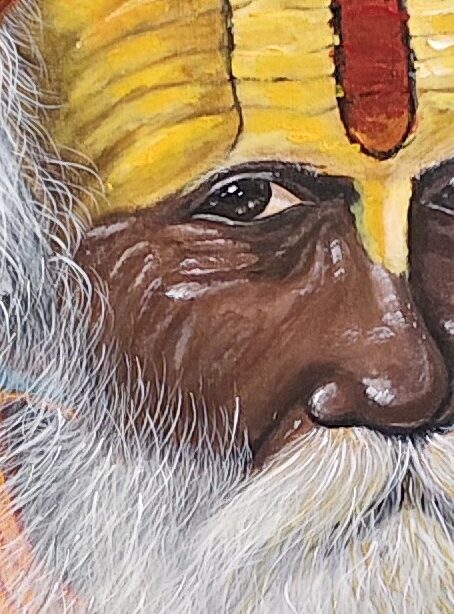
This evocative portrait captures the profound stillness of an Indian saint, rendered with masterful restraint and spiritual intensity. His deep umber skin, weathered and luminous, speaks of a life lived under open skies and in quiet communion with the divine. His long, flowing white beard cascades like a river of time, each strand painted with delicate, deliberate strokes that echo the rhythm of breath and prayer.
Crowning his head is a voluminous orange turban, loosely wrapped and softly contoured, glowing in hues of saffron, rust, and ochre. The folds are sculpted with painterly sensitivity, suggesting both the humility of a renunciate and the quiet majesty of a spiritual elder. The turban is not sharply defined, but rather breathes with the softness of worn fabric and sacred fire.
His forehead bears a bold sectarian mark—a tilak painted in vermilion and ash white, vertically aligned and unapologetically vivid. It is the spiritual axis of the composition, drawing the viewer’s gaze to the seat of inner vision and divine awareness.
Draped around his body is a flowing orange religious cloth, rendered in sweeping, expressive strokes. The fabric envelops him like a flame—its folds and creases alive with movement, yet grounded in stillness. The cloth is not merely a garment, but a symbol of renunciation, purity, and spiritual discipline. Its color—deep saffron—resonates with the sacred, echoing the robes of monks and the fire of transformation.
Color Palette
Earth tones: Rich umbers, burnt sienna, and raw ochre ground the portrait in natural realism.
Spiritual hues: Saffron, vermilion dominate the turban, cloth, and tilak, symbolizing fire, purity, and transcendence.
Artistic Style
The artist employs a spiritual realism approach, blending symbolic portraiture with textural impressionism. The brushwork is expressive yet reverent, with a tactile quality that invites the viewer to feel the fabric, the skin, the silence. Light is used sparingly but purposefully—falling across the saint’s face and garments like a benediction, creating a chiaroscuro effect that evokes both mystery and grace.
The background is intentionally minimal—an abstract wash of earthen tones, perhaps suggesting the worn walls of a temple or the timeless expanse of inner space. The composition is meditative, balanced, and deeply human—yet elevated by the spiritual charge of its subject.
This is not merely a portrait—it is a visual invocation. A moment of sacred stillness captured in pigment and light. A flame that does not flicker, but endures.
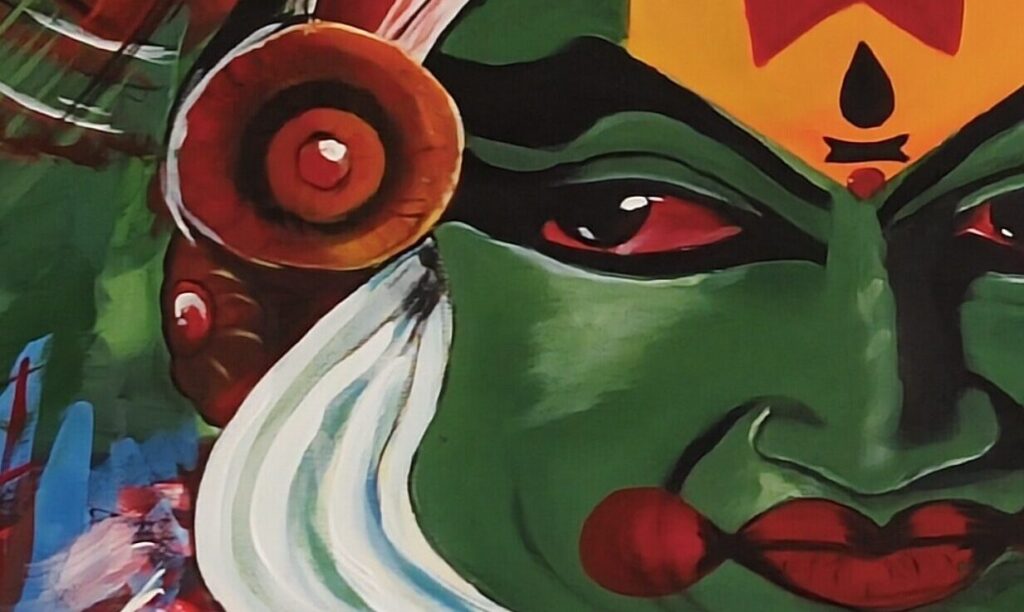
Style & Technique : Executed in a realist-expressionist style, the painting balances find detail with emotional abstraction. The brushwork around they eyes is sharp and deliberate, while the surrounding textures are softened to enhance focus and mood.
Color palette : The palette is rich and theatrical - deep reds, forest greens and stark whites dominate the composition, echoing the traditional Kathakali makeup and costume. A dark, muted background isolates the subject , allowing vibrant face to emerge with striking clarity and intensity.
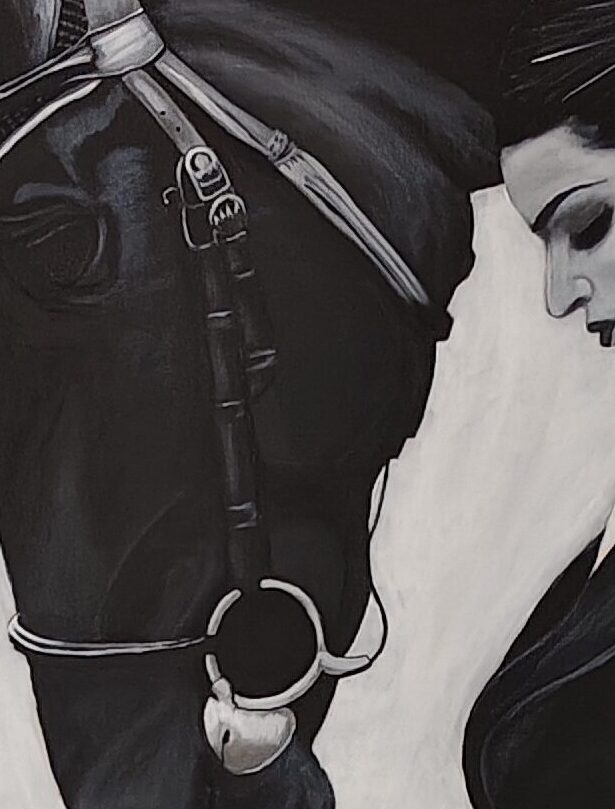
Both figures stand side by side, dominating the canvas with balanced spatial placement.
Style: The contemporary style likely includes minimalistic or abstract elements, with strong contrasts, clean lines, and perhaps geometric or stylized interpretations rather than hyperrealistic details.
Color Palette : The black and white palette intensifies the focus on form, shadow, and light interplay, stripping away the distraction of color to spotlight emotion and structure.
Mood and Tone: The monochrome scheme contributes to a timeless, contemplative mood—evoking themes of innocence, courage, and the bond between human and animal. The girl's rookie status symbolized through posture —curious, tentative—with the horse portrayed as calm & steady.
Symbolism: The juxtaposition of a rookie girl with a horse is a metaphor for new journeys, learning, growth, partnerships that transcend language and species—particularly poignant in contemporary art that often seeks to capture deeper narratives beyond literal depiction.
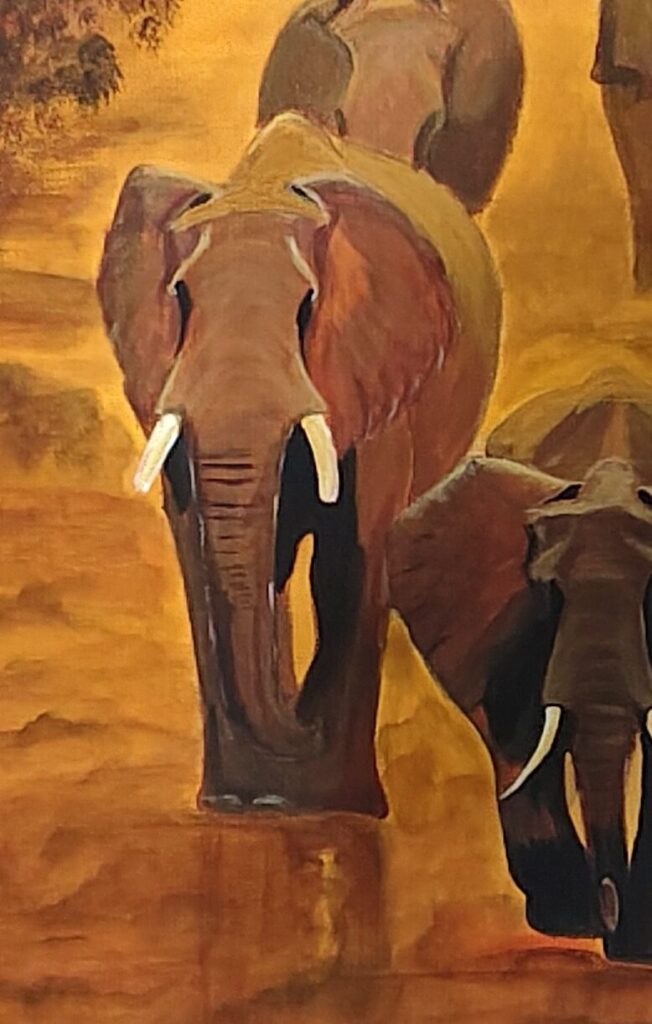
What makes the scene hauntingly beautiful is the reflection - not from water, but from the dusty earth itself, catching the low sun's rays and mirroring the elephants is a shimmering, surreal way. It's as if the ground remembers every step they've taken.
Painting evokes a sense of timelessness and reverence - a tribute to the ancient rhythm of life, the bond between generations, and the sacred silence of dusk in the wild.
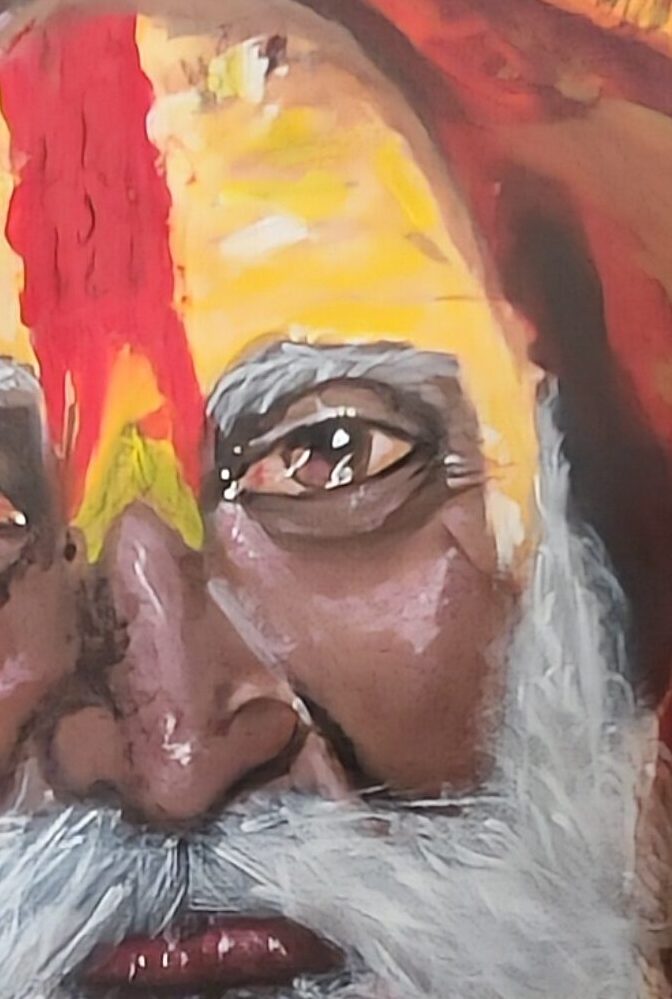
This piece evokes both nostalgia and serenity, inviting reflection on the soul's journey toward surrender and peace. The muted background and soft lightning enhance the emotional depth, making this painting not just a visual experience, but a spiritual encounter.
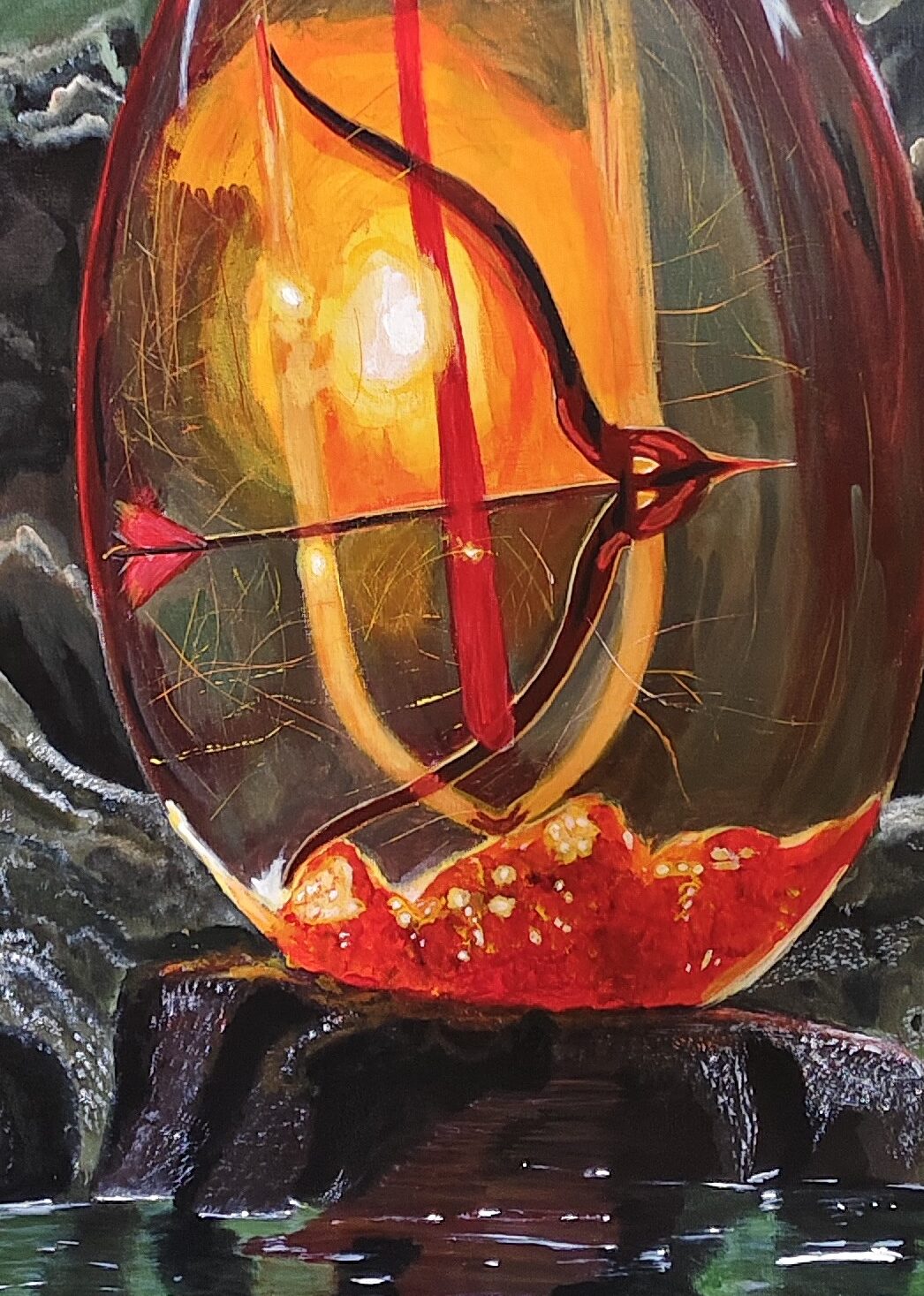
Within this transparent sanctuary lies a bow and arrow, not as instruments of war, but as emblems of spiritual resolve and cosmic alignment. Their form is graceful, etched with fine detail, suggesting both tension and tranquility. Alongside them floats a sectarian mark—the sacred tilak worn by Hindus—rendered in radiant hues of saffron, vermilion, and ash. It hovers like a flame of devotion, untouched by gravity, glowing with the quiet intensity of inner awakening.
Color Palette
The painting is bathed in a warm, meditative palette:Golden yellows and amber: Dominating the sunlight and reflections, evoking divinity and illumination and water suggesting purity and serenity.
Earthy browns and greys: Found in the stones, grounding the composition with natural texture.
Artistic Style
The artist employs a symbolic realism style, blending spiritual iconography with naturalistic detail. The brushwork is soft and layered, creating a dreamlike atmosphere. Light is treated as a sacred element—almost a character in itself—used to guide the viewer’s eye and evoke emotion.
Textures are carefully rendered: the smoothness of glass, the ruggedness of stone, the fluid shimmer of water. The composition is balanced and meditative, with a central focus that radiates outward, much like a mandala.
The overall style suggests influence from Indian miniature painting, with its attention to symbolic detail, but reinterpreted through a modern, contemplative lens—where every object is not just seen, but felt.
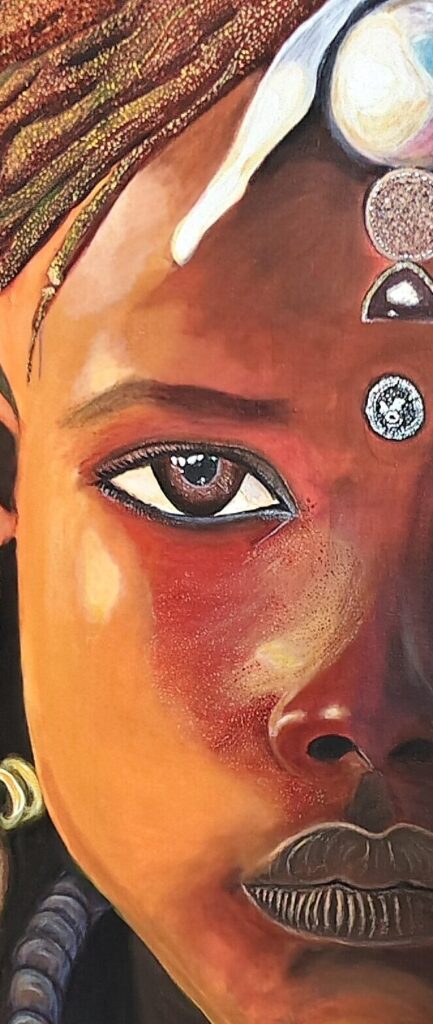
The girl’s face is decorated where each color carrying symbolic meaning: black symbolizing power and mystery, white signifying purity and hope, red indicating vitality and energy, and yellow representing joy and warmth.
Her jewelry consists of handcrafted, symbolic adornments such as beaded necklaces, and earrings, often made from materials sourced locally — beads, shells, metal, or colorful stones — representing identity, rank, or marital status within the tribe.
The painting’s style emphasize the serene yet dignified expression of the girl, conveying pride and resilience.
The background could be rendered in earthy tones or vibrant colors that echo the natural environment or cultural motifs of the tribe, enhancing the overall sense of rootedness and identity.
This artistic portrayal honors the rich traditions of tribes who use body art and jewelry not only as ornamentation but as a living language of culture, spirituality, and community belonging. The painting thus stands as a powerful tribute to the heritage, strength, and beauty of black womanhood.